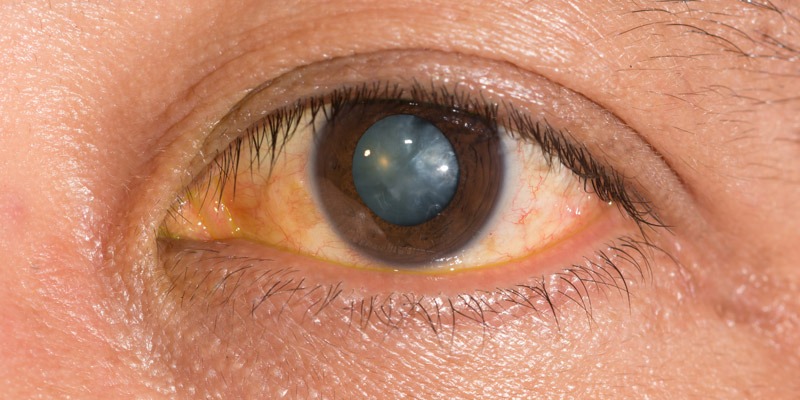
Presenile cataracts are a common eye condition that can occur in people as young as 40. Symptoms of presenile cataracts include blurred vision, difficulty seeing at night, and sensitivity to light. If you are experiencing any of these symptoms, you must see your optometrist as soon as possible for a diagnosis. In this blog post, we will discuss the causes and symptoms of presenile cataracts, as well as how they can be treated.
This type of cataract is caused by a buildup of proteins in the lens of the eye, which causes the lens to become opaque and prevents light from reaching the retina. Presenile cataracts can be treated with surgery, which involves removing the cloudy lens and replacing it with an artificial lens.
It might seem like presenile cataracts are not that big of a deal, but if left untreated, they can cause serious problems. If you suspect that you or someone you know has a presenile cataract, it’s important to see an eye doctor right away for an evaluation. Early diagnosis and treatment are the best way to preserve vision and prevent further damage.
Identifying presenile cataracts is a difficult task because its symptoms are not always apparent. Some common symptoms include:
If you are experiencing any of these symptoms, you must see an eye doctor as soon as possible. Also, if you have a family history of cataracts, you should be sure to get your eyes checked regularly. The right treatment can help you to improve your vision.
The causes of presenile cataracts can be either genetic or environmental. Let’s discuss how these two factors can lead to the development of presenile cataracts.
Along with these causes, there are also some risk factors that are associated with presenile cataracts. These include:
Now that we’ve discussed the causes and risk factors of presenile cataracts, let’s move on to how they’re detected and treated. Also, it is important to note that a presenile cataract can lead to vision problems and even blindness if left untreated.
In addition, your doctor will likely ask about your medical history and any medications you are taking. He or she may also perform a visual acuity test to determine how well you can see.
It is important to note that not all cloudy lenses are cataracts. In some cases, the lens may be clouded due to other conditions, such as diabetes or age-related macular degeneration. Therefore, it is important to see an eye doctor for a complete evaluation.
There are a few ways to treat presenile cataracts. Some common treatment options include:
It is common for people with presenile cataracts to wear either glasses or contact lenses. This helps to improve vision and make everyday activities easier. For instance, you may find it difficult to read without glasses or contacts if you have this type of cataract.
In some cases, surgery may be necessary to remove cataracts. This is usually done when the cataracts are severely affecting vision and other treatment options have not worked. Surgery is a fairly simple procedure and typically has a good success rate. This surgery works by replacing the cloudy lens with a clear artificial one.
This is one way to help relieve the symptoms of presenile cataracts, but it will not improve your vision. Your doctor may also recommend that you use artificial tears. These can help lubricate your eyes and reduce dryness and irritation. For example, if your cataracts are causing glare, you may be given a pair of glasses with a special anti-glare coating.
These habits can contribute to the development of presenile cataracts. If you already have a presenile cataract, these lifestyle changes may help slow their progression. Overall, it is important to take care of your health to reduce your risk of developing this type of cataract or other age-related conditions.
So, do not hesitate to reach out to your doctor if you think you may be developing this cataract. With early detection and treatment, you can help slow the progression of this condition and preserve your vision.
To conclude, presenile cataracts are a type of cataract that can develop in people as they age. While they are not necessarily harmful, they can cause vision problems. If you think you may have presenile cataracts, it is important to see an eye doctor for a proper diagnosis.
There are numerous treatment options that can help improve your vision if you have presenile cataracts. These include eyeglasses, contact lenses, and surgery. If you have this type of cataract, talk to your eye doctor about the best treatment option for you.
And if you have any questions, please don’t hesitate to reach out to Eye Mantra. At EyeMantra we have a team of experienced eye surgeons, who will be happy to answer your any questions on cataract surgery, cataract surgery cost, cataract lens cost for different cataract surgery types- Phacoemulsification, MICS & Femto Laser Cataract. Call us at +91-9711116605 or email at eyemantra1@gmail.com for inquiries.